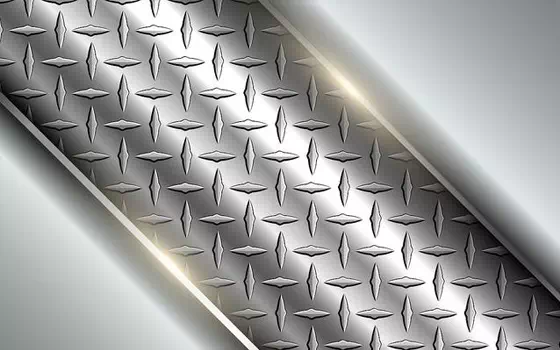Welcome to Zhishang Steel Co., Ltd.
TEL: (Gavin) +86-15665898999 | Email : info@zhishangsteel.com
Location:Home>>News>>Company News » The main characteristics of stainless steel

Weldability, corrosion resistance, polishing properties, heat resistance and its requirements for chromium content are crucial aspects in the manufacture of stainless steel products. These characteristics not only directly affect product quality, but also determine its application field and market competitiveness.
Different uses of the product have different requirements for welding performance. For example, a class of tableware usually does not require welding performance, even including some pot enterprises. However, the vast majority of products, such as second-class tableware, thermos cups, steel pipes, water heaters and drinking fountains, require raw materials with good welding properties. Good weldability means that cracks and other defects can be avoided during the welding process to ensure high quality and long-term use of the product.
The vast majority of stainless steel products need to have excellent corrosion resistance, such as, second class tableware, kitchenware, water heaters and drinking fountains. Some foreign businessmen even conduct corrosion resistance tests on the products when purchasing: heat the NACL solution to boiling, keep it for a period of time and then dump the solution, wash it, dry it and weigh it to determine the degree of corrosion. It should be noted that because the emery cloth or sandpaper used when the product is polished may contain Fe components, this will lead to rust spots on the surface during the test, thus affecting the test results.
In today's society, most stainless steel products will be polished in the production process, only a few products such as water heaters and water dispensers do not need polishing. Therefore, this requires the raw material to have good polishing properties. The main factors affecting polishing performance include the following:
Raw material surface defects: such as scratches, pitting, pickling and other problems.
Material problem: if the hardness is too low, it is not easy to polish (BQ is not good), and the surface is prone to orange peel phenomenon during deep stretching, thus affecting the BQ property. On the contrary, BQ with high hardness is relatively good.
Products that have been deeply drawn: small black spots and RIDGING will appear on the surface of areas with a large amount of deformation, thus affecting BQ property.

Heat resistance means that stainless steel can still maintain its excellent physical and mechanical properties at high temperatures. The impact of carbon is particularly significant:
The role of carbon: Carbon is an element that strongly forms and stabilizes the austenitic phase in austenitic stainless steel, which can significantly improve the strength of austenitic stainless steel. Carbon also improves its resistance to stress corrosion in highly concentrated chlorides such as 42%MgCl2 boiling solution.
Harmful effects of carbon: However, in many cases, carbon is treated as a harmful element. This is because during the welding process of stainless steel or when heated to 450~850 ° C, the carbon will form high-chromium Cr23C6 type carbon compounds with the chromium in the steel, resulting in local chromium depletion, thereby reducing the corrosion resistance of the steel, especially the resistance to intergranular corrosion. Therefore, since the 1960s, most of the newly developed chromium-nickel austenitic stainless steels are ultra-low carbon, with a carbon content of less than 0.03% or 0.02% to reduce intergranular corrosion sensitivity. Experiments show that the effect is most significant when the carbon content is less than 0.02%.
Requirements for chromium content
When the chromium content in the steel reaches at least 12.5% atomic ratio, the electrode potential of the steel will change from a negative potential to a positive electrode potential, which effectively prevents electrochemical corrosion. The chromium content is crucial for the corrosion resistance of stainless steel, especially in oxidizing environments, where chromium is able to protect the base metal from erosion by forming a very thin and transparent chromium oxide film.
The properties of stainless steel are related to each other, and together determine its performance and applicability in different applications. By optimizing composition control and production processes, high-quality stainless steel products can be produced to meet a wide range of demanding requirements.

Zhishang Steel has always been a pioneer in custom steel and special supplies, and has been recognized for its efforts in enhancing work efficiency and product quality. In addition to ISO9001:2015 certification, we also adhere to strict quality policies and proprietary procedures. If you have any questions, please contact us to provide the best type of product solution for your pre-painted, coil coating metal process, we will closely support after-sales service to ensure that your subsequent problems can be solved in a timely manner, if you have any questions, please send email to info@zhishangsteel.com, we look forward to serving you.

Zhishang Steel, specializing in domestic steel products trade, warehousing, processing and other services. The team has four service teams: Shandong Zhishang Steel Co., LTD., Shandong Zhiyiheng Trading Co., LTD., Tai 'an Zhishang Economic and Trade Co., LTD., Shandong Zhishang Steel Structure Co., LTD. Mainly engaged in steel coil, coated, stee···